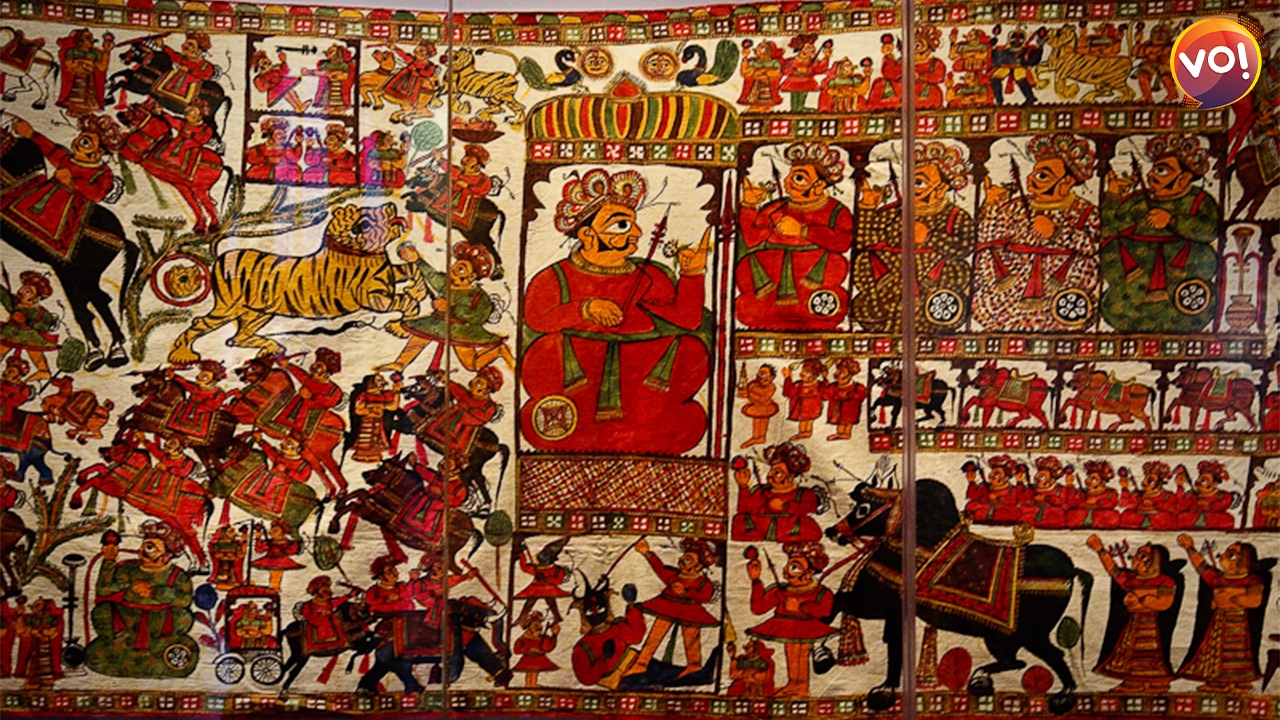Rajasthan’s Phad art is a form of religious storytelling through visuals that survived centuries. For the artists, each painting is an act of devotion. The art pays tribute to India’s rich tradition and history. Phad painting of Rajasthan particularly stands out for its unique history, origin, and the efforts put into its revival.
A 700-year-old legacy passed down over generations within a single family, Phad finds its origins in Shahpura, near Bhilwara, Rajasthan. Phad is a type of scroll painting that narrates elaborate religious stories of local deities and gods. The idea to create these scrolls came to the members of the nomadic Rabari tribe when they realised that there was no one fixed temple that they could visit. So, instead, they created temples that could visit them. The Rabari community is a nomadic pastoral community indigenous to northwest India.
These traditional paintings or scrolls were carried by priest-singers (Bhopa) and their wives (Bhopi), who would sing and perform stories of their local deities—Devnarayanji (a reincarnation of Vishnu) and Pabuji (a local hero). The Phad painting would be unrolled, or unfolded after sunset, and the performance in front of villagers would last into the night. This is perhaps why the paintings are called ‘Phad’, which means ‘fold’ or ‘unravel’ in the local dialect.
The tribe travelled from one village to another, playing their ‘Ravanhatta’—a two-string instrument, performing dramatic renditions of stories of Devnarayan and Pabuji folk deities using Phad as a visual aid. The songs were performed by the Bhopa while the Bhopi would follow along with a lamp, illuminating the section of the painting her husband was singing about.

Till 50 years ago, the artists of Joshi lineage of the Chippa caste exclusively practised Phad painting. The traditional paintings used to be large, with ‘Pabuji ki phad’ being 13 arm lengths long, and those of Devnarayan being nearly 30 feet long.
Phad paintings are created on hand-woven coarse cotton cloth, which is soaked overnight to thicken the threads. It is then stiffened with starch from rice or wheat flour, stretched, dried in the sun and rubbed with a moonstone to smoothen the surface and give it a sheen. The entire process of making a Phad painting is completely natural. Paints are sourced from stones, flowers, plants and herbs. The paints are mixed with gum and water before applying them to the cloth.
Traditionally, orange is used for limbs, yellow for ornaments and clothing, green for nature, brown for architectural designs, red to symbolise royal clothing and blue for curtains. Black is the last colour used to paint the border.
Once the painting is completed, the artists give ‘life’ to the deity by opening the pupils of the main deity at the centre of the painting. This is the point when the creation goes beyond being a work of art and becomes a travelling temple.
Also Read: JEE Advanced 2022: PwD Topper Secures All India Rank 26 in General Category













